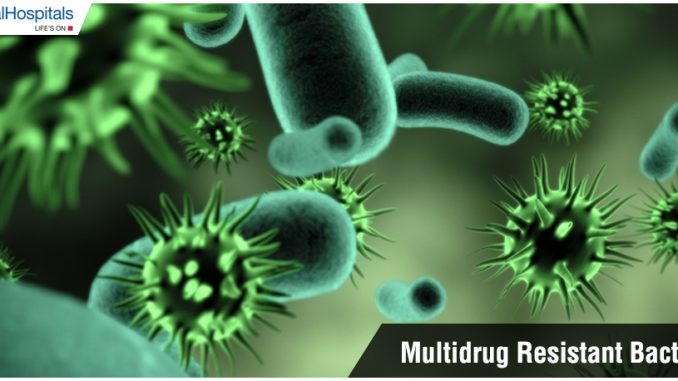
In News
Researchers from the Indian Institute of Technology (IIT) Roorkee found a new molecule that has the potential to kill multidrug-resistant Bacteria.
In-Detail
- For finding the new molecule, researchers from IIT Roorkee have screened a small-molecule library of 11,000 compounds.
- They found a potent molecule that belongs to nitrofuran class of antibiotics – nitrofurantoin and furazolidone – to exhibit broad-spectrum bacterial activity against multidrug-resistant bacteria like E. Coli, Mycobacterium tuberculosis, Klebsiella pneumoniae, Acinetobacter baumannii, Staphylococcus aureus and Clostridium difficile.
The Molecule Testing
- The researchers have tested the molecule in mice infected with sepsis-causing bacteria A. baumannii.
- The molecule reduced the bacterial load significantly in the spleen, kidney, lungs and liver.
- Only half the dose of the new molecule compared to nitrofurantoin was enough to reduce the bacterial load.
- The researchers found that the molecule kills the bacteria in two ways.
- It damages the DNA of the bacteria by inhibiting cell division.
- When half the dose to kill the bacteria was used, the molecule hindered cell division in daughter cells leading to the bacteria forming into long filaments.
- Because of the two pathways in which the molecule kills the bacteria, developing resistance by the bacteria will take a very long time, explains the researchers.
- They also found that, even at a low 16-fold concentration, the molecule was able to kill E. Coli compared to nitrofurantoin.
- The molecule was also effective against both gram-negative and gram-positive bacteria and anaerobic bacteria.
- Also, persister bacteria that are dormant were also killed by the molecule.
Pro-Drug
- The researchers generated mutants of the molecule and developed a pro-drug.
- This pro-drug will become active only after getting inside the body of a bacteria, thereby limiting the scope of bacteria to develop resistance.
- Also, the components formed by the pro-drug are potent and short-lived, thus leaving less time for bacteria to develop resistance.
Doubly Effective
- The molecule was effective at inhibiting bacteria’s ability to develop biofilm, the protective layer that bacteria use against antibiotics.
- It is also effective at disrupting already formed biofilms.
- The researchers also found that the bacteria’s mechanism to flush out drugs from its body through efflux pumps was ineffective against the new molecule.
- Also, the tested the molecule to see whether reactive oxygen species (ROS) were generated to kill the bacteria.
- They found that ROS was produced after the bacterial kill. That means formation of ROS is a consequence of the bacterial kill and not the killing mechanism.

Leave a Reply
You must be logged in to post a comment.